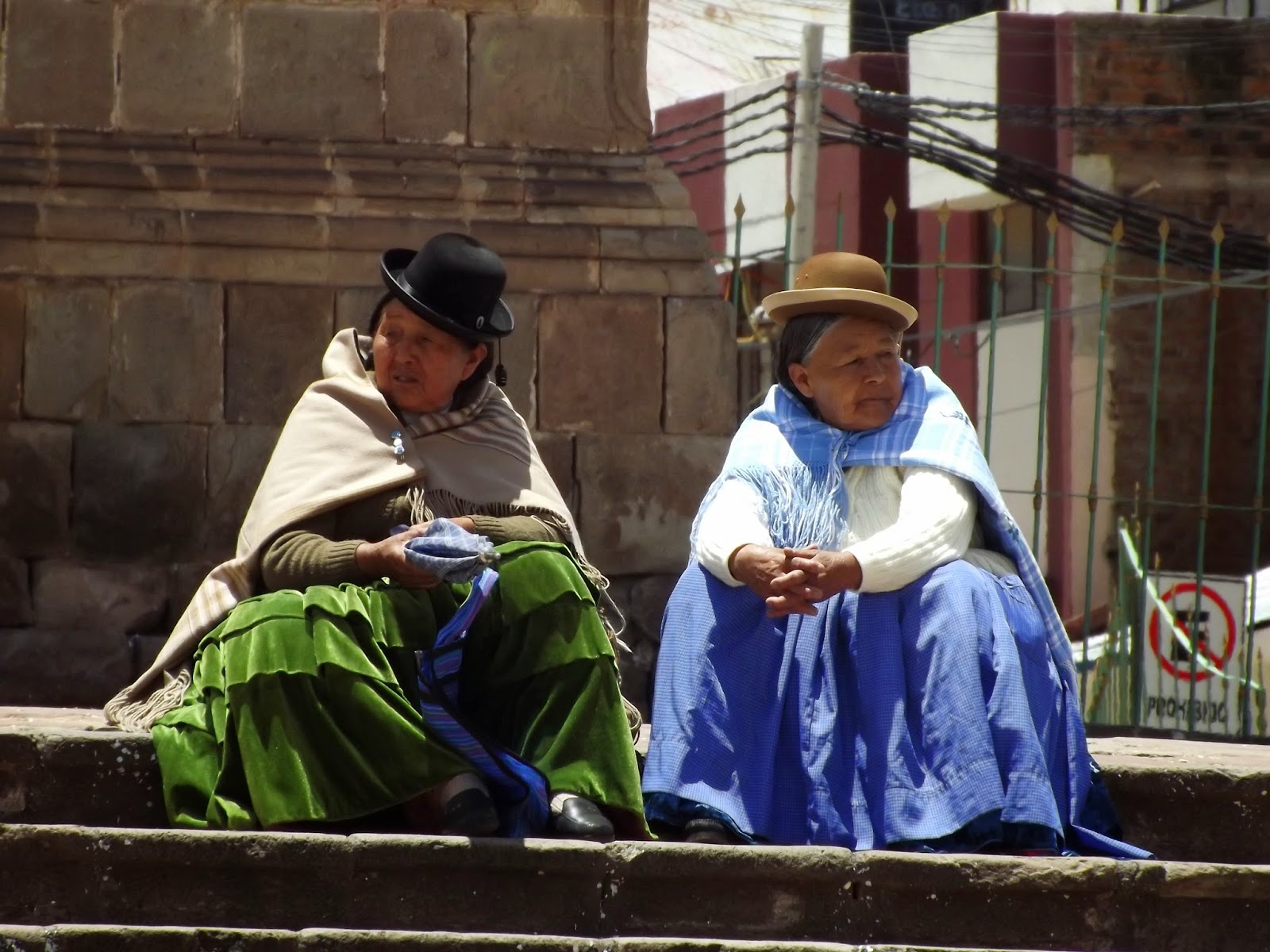After our brief side-trip to Sillustani, we rumbled into Puno in the early evening and only had time to look around a bit then and the next morning before we caught our bus to Bolivia. At high altitude, us jungle dwellers don't feel so terrific, and by the time we arrived I felt like I'd just run a marathon and had the foreshadowing of a thunderous headache. But it wasn't until the next day that altitude sickness hit in full force. The morning was spent drinking copious volumes of coca tea to help deal with the headache, poking around the plaza near our hotel, and moving at the speed of a pregnant sloth. I only captured a few photos of just how different from Tarapoto this part of Peru is because by 3 p.m. we had boarded our bus to leave for Bolivia.
Stone circles on the hillside, not ancient from what I understand, but interesting all the same.
Mototaxis are plentiful in Puno as they are in Tarapoto, but because of the different (COLD!) climate, they're enclosed. They are referred to as Toritos (little bulls).
A beautiful day for a wedding. We watched the happy couple pose for pictures then climb into a white stretch limo to travel the 100 yards to the reception.
A beautiful building next to the central plaza.
A tidy row of stores and shops next to the plaza.
Two ladies having a visit after the wedding.
One of the things most noticeable for me, other than the fact that it was COLD in Puno, was the quiet. After 5 months of incessant noise from every direction in Tarapoto, especially mototaxi noise, it was blissful to be in a place that was comparatively quiet, especially at night. In addition to the different clothing people wore, I noticed that every building has windows with glass, not just screens or open spaces, and there are a lot more cars and small trucks. A reflection of the link between culture and climate, I suppose.
We people-watched and guzzled several cups of coca tea during the course of our morning amble, as well as each having a massive plate of caldo de gallina, a delicious soup containing a large portion of chicken, a whole boiled egg, noodles, vegetables and a side plate of baked plantains. I don't know if that remedy would work for a hangover (just in case you need one), but it certainly did the trick for my altitude sickness. Sadly, I didn't have the presence of mind to take a picture of this delicious home-made staple of the Peruvian diet. I will be on the lookout for other photo opportunities.
Just before 3 p.m. we boarded a bus to Bolivia. The trip was long, crowded and the border crossing was a pain, but otherwise it was uneventful and arriving in Copacabana was a reward. Copacabana is a small city, on the shores of the beautiful Lago Titicaca, the highest freshwater lake in the world. This lake spans the border and reaches its arms into both Bolivia and Peru and is rich with history. Standing on its expansive shores you can be convinced you have arrived at an ocean. We stayed at a delightful hostel/hotel named La Cupola, up on the side of a mountain overlooking the harbor and town below. It was a chilly and blustery night, but with blankets piled high on the bed and sensational view over the lake we didn't care.
View out over part of the city from the grounds of La Cupola. Every room at the hotel has a view and an unique layout.
Sadly, the following day, I again felt like something the cat had dragged in, so while my industrious husband climbed the mountain to the Cerro Calvario, and viewed the world from the 14 stations of the cross, I lay in a hammock drinking coca tea. The air at that altitude leaves you completely breathless and the intensity of the sun is stunning, so I was very glad to not have to exert myself other than to raise my tea cup or my camera for another picture.
Several hours later Murray returned from his adventure with a huge smile and a terrible sunburn, and the two of us looked like a matching pair of broiled lobsters. On the
up-side, the coca tea had done its job, and I was feeling much better. I even had enough energy to go down to the harbor with him and do a little strolling.

We finished the day with a trout dinner and another gallon of coca tea. It had been a blissfully restful day by all accounts, and a necessary one because the next day we were to hop another bus, this time bound for La Paz. But that is a story for the next post. This was a whirlwind week of exploration, so stay tuned for more of beautiful and interesting Bolivia. Hasta pronto!












Your posts are amazing & make me feel like I am there with you. Your photos are stunningly beautiful! What exactly is coca tea? Miss you friend!
ReplyDeleteThank you Brandy! Coca tea is made from the steeped leaves of a traditional Amazon plant the Coca plant. The leaves are a source of energy and vitamins and have been used for millennia by the people of South America.
Delete